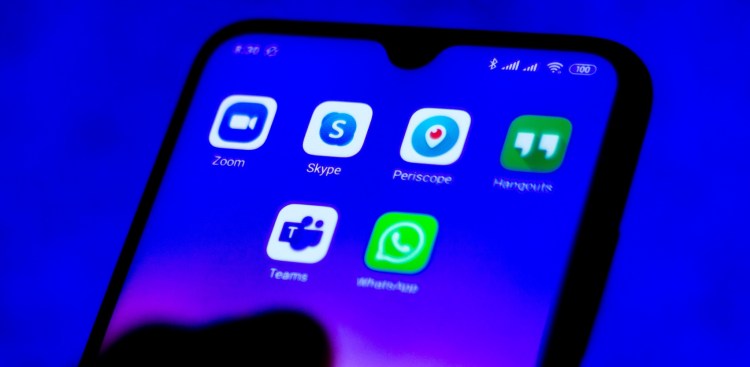The COVID-19 crisis has created winners and losers across the technology realm — ride-hailing apps have plummeted due to widespread shelter-at-home policies while demand for remote-collaboration and communication tools have gone through the roof.
An interesting trend is that services designed for specific use cases are now being given new life as businesses and consumers search for tools to meet their evolving needs. Video-conferencing platform Zoom jumped from 10 million daily users in December to more than 200 million in March and has become the defining app of the coronavirus era. No longer just for business, Zoom is now being used widely for online education, fitness classes, and to help family and friends keep in touch. Microsoft Teams has also experienced unprecedented demand from a newly remote global workforce. And it too has gained traction in the consumer sphere, leading Microsoft to expand the scope of Teams to target family and friends.
While it’s clear that video-calling apps are benefiting from the pandemic, what’s perhaps most interesting is that people are turning to enterprise-focused tools for personal social interactions. Countless consumer apps were already in place to connect people the world over — and usage across all the major social network apps has also risen, with Facebook last month revealing that voice and video-calling in Messenger and WhatsApp had more than doubled in some markets.
Limitations
As the messaging app of choice for more than 2 billion users globally, WhatsApp should be enjoying the spotlight when it comes to group video calls. Yet millions of people are instead flocking to enterprise apps to keep in touch with loved ones. One reason for this is that when people think about organizing group video calls, they often turn to platforms they are familiar with from work, such as Zoom and Microsoft Teams.
June 5th: The AI Audit in NYC
Join us next week in NYC to engage with top executive leaders, delving into strategies for auditing AI models to ensure fairness, optimal performance, and ethical compliance across diverse organizations. Secure your attendance for this exclusive invite-only event.
But many users are sidestepping WhatsApp for alternatives because of the app’s inherent limitations. Teams allows 20 people in a private video chat, while Zoom’s free plan enables video calls for up to 100 participants (though with a 40-minute time restriction and a risk of being “Zoombombed”). In contrast, WhatsApp allows just four participants per video call.
Moreover, the full-featured version of WhatsApp is limited to smartphones. Tablets and laptops are typically better for larger group video calls, as there is greater screen real estate to display more friends and family members simultaneously.
WhatsApp is aware of these limitations, and the Facebook-owned company is in the process of increasing group video call limits to eight people. This will be made available first through a beta version of the app and is a definite improvement. But it still falls at least four participants short of rival consumer apps, such as Google’s Duo, which recently increased its call participant limit to 12. WhatsApp is also reportedly working on multi-device support, which could open things up to larger screens, though how this would work isn’t quite clear — WhatsApp messages are stored locally on devices, rather than on remote servers, which makes syncing them across devices something of a challenge. However, if WhatsApp can achieve true multi-device support without compromising security, it could be a game-changer for group video calls.
To be clear, WhatsApp is not in any danger of being usurped by Zoom or Microsoft Teams. They are ultimately different services aimed at distinct markets, regardless of Zoom and Team’s newfound popularity in the consumer sphere. However, the sudden surge in demand for group video calling has exposed WhatsApp’s limitations — and it appears the chat app has gotten the message.

